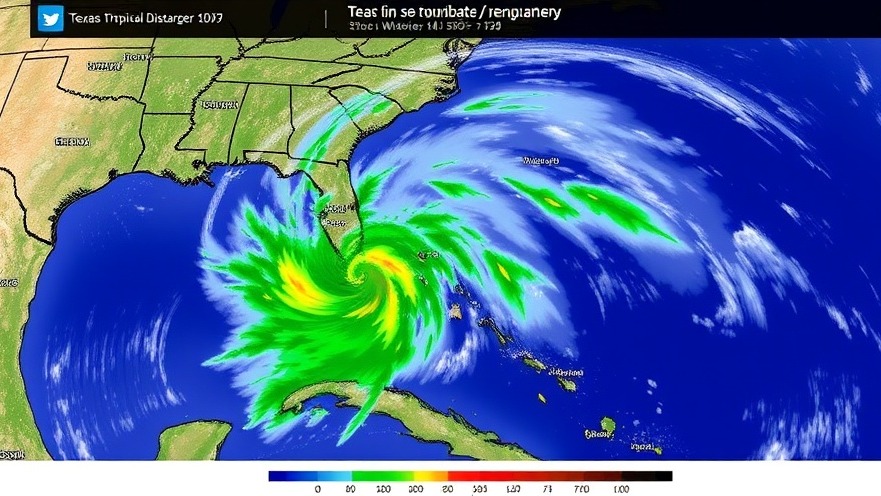
Understanding the Tropical Disturbance Affecting Texas
As Texas continues to experience unpredictable weather patterns, the recent tropical disturbance has brought significant rainfall to the Texas coast. This weather event, while common in the late summer months, raises essential conversations about climate behavior and preparedness in the Lone Star State. Meteorologists have been tracking this disturbance, using a variety of tools and predictive models to communicate its potential impact on local communities.
The Science Behind Tropical Disturbances
Understanding tropical disturbances is crucial for anticipating their effects. These systems are essentially organized areas of clouds and thunderstorms that can lead to the development of tropical depressions or storms. The current disturbance impacting the Texas coast has been closely monitored by the National Hurricane Center (NHC), who emphasize the importance of watching these systems closely as they can rapidly escalate into more severe weather, including hurricanes.
The Impact of Rainfall on Texas Communities
The recent rainfall brought by the disturbance is seen as a double-edged sword. On one hand, it can provide much-needed relief from the lingering drought conditions that have plagued parts of Texas for months. On the other hand, excessive rainfall raises concerns about flooding, landslides, and infrastructure challenges. For residents, this means being prepared for the possibility of swollen rivers and street flooding, particularly in low-lying areas.
Historical Context: Rain Patterns in Texas
Historically, the Texas coast has been subject to fluctuations in long-term rainfall patterns that are affected by various climatic factors such as El Niño and La Niña. Understanding these patterns can provide insight into how current weather phenomena might shape future conditions. Residents are encouraged to respect these historical trends and remain aware of how seasonal weather could impact their proximity to large bodies of water.
Future Insights: Preparing for Weather Events
As climate change continues to influence weather patterns globally, experts predict more frequent and intense tropical storms could impact the Texas coast. With rising sea levels and warmer ocean waters, the likelihood of storms becoming more severe is elevated. Consequently, local governments and citizens are urged to engage in proactive disaster preparedness measures. This includes staying informed about weather forecasts and having emergency plans in place.
Community Perspectives: Local Voices Prep for Storm Season
The local community’s response to these weather alerts is commendable, encompassing cooperative efforts to strengthen flood defenses and rallying support for families affected by past storms. Initiatives spearheaded by local non-profits are promoting awareness around emergency kits and shelter options, ensuring that every resident is informed and ready to act when unpredictable weather strikes.
Final Thoughts: Resilience and Awareness
Tropical disturbances like the current one remind us of the unpredictability of nature and the importance of resilience in community planning. The ability of communities to respond to natural disasters can drastically affect outcomes during severe weather events — a crucial topic as Texas continues to grapple with its own unique climate challenges.
For all Texans, staying vigilant and prepared is the key to not only weathering the storm but thriving in the face of uncertainty.
 Add Element
Add Element  Add Row
Add Row 



Write A Comment